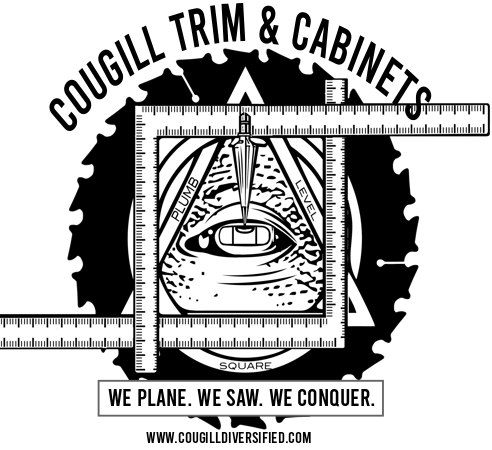Painted Cabinets: Levels of Perfection
/We generally think of painted finishes as being more economical than stained or clear-coated finishes, but when it comes to cabinetry, this is largely a misconception. Would you believe that a painted finish is actually more labor intensive than a stained or clear finish?
Painting MDF: the pros and cons
When we use a panel material for decorative surfaces surrounding cabinetry, those panels are most often made from MDF, a composite panel formed using wood pulp, binders, and other resins under pressure. It is extremely flat and consistent, making it ideal for decorative panel applications. However, it has a few drawbacks.
It’s heavy This means if it’s hinged it may require additional hinges to carry the load. It is also more labor intensive to work with due to its high density.
It’s fairly fragile. A corner in solid wood can take a direct blow of considerable force without sustaining much damage at all. MDF? Not so much. To achieve similar durability, it requires gluing hardwood edging onto the panel, which creates extra steps, the risk for a glue line that will show through a finish, and additional material cost.
The fibers swell with moisture. When we use water-based finishes over MDF or when the material is exposed to water directly such as through flooding saturation or high humidity, the fibers swell and pull apart from the binders slightly. When they dry out, the fibers are push out of their dry position still, but there are no binders holding them together, creating a rough, fuzzy appearance. This can be counteracted by sealing with an oil-based primer, treating the edges with drywall compound or sizing (thinned down wood glue), or by using a marine-grade MDF such as Extira, rated for exterior usage. These solutions all work great, but it means more labor and more cost. With oil-based primers especially, the fumes are hazardous and not the best to use in occupied interiors for instance.
Basically, for a painted finish to cost less than a clear or stained finish you need one or both of these conditions to be true: undervalued / exploited labor of economically-disadvantaged workers such a apprentices or immigrants, or a surface quality that will not satisfy the requirements of a true cabinet-grade finish, such a what you would put on a wall with a roller. More on this later.
Stain-Grade Expense: an outdated misconception
The idea of clear-coated or stained wood products being so much more expensive than painted products is outdated. Thirty years ago, labor was less expensive. Carpenters and finishers were in abundance. Today, that’s just not the case. As a shrinking labor pool struggles to keep up with a growing demand for skilled labor, prices increase in response to scarcity.
Where material costs used to be more substantial in comparison with labor, now spending more on material to save labor is an easy decision. This has led to the rise of luxury pre-finished surfaces, an increased number of laminate products on the market, more varieties of veneered wood panels on the market, and a golden age of lumber milling. Even as our abundance of forestry products is at an all-time low, the technology of sheet goods production and supply chain and logistics has led to very affordable pre-finished or “stain grade” materials, especially when considered through the lens of labor hours.
Fine Paint Finishes: What is a Cabinet-Grade Finish?
A paint finish suitable for cabinetry has more in common with your car’s paint job than your house’s. While it’s possible to apply a cabinet-grade finish with a fine foam roller and a lot of sanding in between coats, most commonly these finishes are sprayed with a HVLP spray system, High Volume Low Pressure. These systems achieve something called atomization whereby the finish is split up into tiny droplets that can be deposited on the surface uniformly and at a size where their surface tension is overcome by their desire to chemically bond with adjacent particles and lay down or flatten. These droplets do something called cross-linking and form surface tension across the entire layer of the paint film, forming a flat, uniform coating on the piece. This is only scratching the surface of a much broader subject, but suffice it to say, cabinet painting is much different from rolling Home Depot latex paint onto your textured drywall at home.
This page on PPG’s web site is aimed at the automotive industry but is a great list of what can go wrong with a paint job, causes, and solutions.
Conclusions
In short, painted finishes seem straightforward: apply coatings, let them dry. That couldn’t be much further from the truth! If you want a quality coating, the good news is you’re already doing business with the right company. We do limited in-house finishing and know when to subcontract out to the pros for larger projects and challenging coatings.




